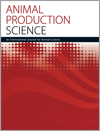
Animal Production Science
Volume 61 Number 5 2021
Australian farmers can participate in the carbon economy through a legislated greenhouse gas methodology when urea is replaced by nitrate in lick blocks fed to beef cattle. In this experiment, aimed at validating the methodology under field conditions, cattle provided with nitrate lick blocks consumed less supplement, and had lower rates of productivity compared with cattle offered conventional urea lick blocks. Farmers are advised to exercise caution when adopting the methodology in its current form.
AN20003Effect of Leucaena leucocephala and corn oil on ruminal fermentation, methane production and fatty acid profile: an in vitro study
 , Cuk Tri Noviandi, Kustantinah, Budi Prasetyo Widyobroto, Andriyani Astuti and Serkan Ates
, Cuk Tri Noviandi, Kustantinah, Budi Prasetyo Widyobroto, Andriyani Astuti and Serkan Ates
Methane from ruminants contributes to ~40% of greenhouse gas emission produced by the agriculture and livestock sector annually. In our study, plants rich in secondary metabolite compounds, such as Leucaena, and oil inclusion to the animal feeding program reduced methane production up to 50%, with the additional benefit of improving the fatty acids profile without negatively affecting metabolism. In the modern ruminant industry, this feeding program strategy can be implemented to design an environmentally friendly livestock–agricultural industry.
In pasture-based feeding systems for dairy cows, dietary protein excess may cause high levels of ammonia formation during digestion, which is a burden for the animal’s metabolism and to the environment. We tested the potential of 35 herbaceous meadow species to mitigate this problem and found seven promising temperate herbs that are candidates as dietary supplements. This outcome can be used to develop herb-based dietary supplements that will benefit protein efficiency, lower nitrogen emissions and improve animal health in grassland-based dairy production.
AN20323 Abstract | AN20323 Full Text | AN20323PDF (487 KB) Open Access Article
AN20005Strategic supplementation of growing cattle on tropical pastures improves nutrient use and animal performance, with fewer days required on the finishing phase
 , Paulo Sergio Correia, Joao Ricardo Reboucas Dorea, Jonas De Souza, Guilhermo Francklin de Souza Congio, Alexandre Vaz Pires, Pedro Antonio Muniz Malafaia, James Drouillard, Carlos Tadeu dos Santos Dias, Albino Luchiari-Filho and Flavio Augusto Portela Santos
, Paulo Sergio Correia, Joao Ricardo Reboucas Dorea, Jonas De Souza, Guilhermo Francklin de Souza Congio, Alexandre Vaz Pires, Pedro Antonio Muniz Malafaia, James Drouillard, Carlos Tadeu dos Santos Dias, Albino Luchiari-Filho and Flavio Augusto Portela Santos 
Average daily gain of cattle grazing tropical grasses is usually low due to restricted nutrient intake. Aiming to increase the efficiency of these systems, sources and levels of supplements was studied to evaluate the effects on animal performance, metabolism and nutrient utilisation. Energy supplementation increased animal performance and beef productivity, enhanced rumen fermentation and improved nitrogen metabolism. These results could help farmers improve the efficiency of their systems and reduce the detrimental effects of excess nitrogen released in the environment.
Cassava bagasse is a by-product feedstuff with potential as a ruminant feed in tropical environments, but there is poor understanding regarding production responses from its inclusion in cattle diets. We found that when cassava bagasse inclusion in a concentrate mix was increased, cattle intake of the concentrate mix increased, but in a curvilinear fashion. We suggest that cattle will eat no more than a maximal limit of cassava bagasse intake, although the reasons why are not clear.
Livestock production in developing countries is inefficient with low growth rates. Over 12 weeks, supplementation of cattle with high-quality molasses blocks containing 8% urea was compared to blocks without urea and previous information on weight changes and average daily gains (ADGs). Animals accessing blocks were heavier and had improved ADGs than those in unsupplemented animals. Farmers agreed their animals were calmer and healthier, had better coat condition with minimal external parasites, and that they wished to purchase the blocks.
AN20517 Abstract | AN20517 Full Text | AN20517PDF (639 KB) Open Access Article
AN19306Optimisation of dry matter and nutrients in feed rations through use of a near-infrared spectroscopy system mounted on a self-propelled feed mixer
 , Philipp Twickler, Alexander Schmithausen, Christian Maack, Abdelkader Ghaly and Wolfgang Buescher
, Philipp Twickler, Alexander Schmithausen, Christian Maack, Abdelkader Ghaly and Wolfgang Buescher
Preparation of total mixed ration to be provided to dairy cattle requires a good understanding of the nutritional composition of the feed resources. In order to overcome the difficulty of monitoring content of stored silage in the silo, we used NIR technology to measure DM and nutrient contents during feed extraction from the silo. The results indicate that NIRS can provide useful information for improving the total mixed ration.
The rumen-fluid inocula used for the in vitro NDF digestibility test is partially responsible for the low repeatability of this analysis due to its variable enzymatic activity and degradative potential, especially when collected through the oesophagus. The incubation of different rumen fluids on the same substrate induced variations in the amylase, cellulase and xylanase enzymatic activities and lead to similar degradative potential at 24 h of priming in diets with at least 20% of concentrates. The priming of the rumen-fluid inocula for an interval of 24 h can be a tool to improve the repeatability of the in vitro NDF-digestibility trials needed for the estimation of feed nutritional value.
AN20197 Abstract | AN20197 Full Text | AN20197PDF (188 KB) Open Access Article
AN20407Effects of long-term exposure to music on behaviour, immunity and performance of piglets
 and Jun Bao
and Jun Bao
This study aimed to verify whether long-term exposure to music was beneficial to piglets. The results showed that long-term exposure to music significantly increased playing and tail-wagging behaviours, and induced positive immunomodulation through increased interleukin-4 levels in piglets. This study suggests that long-term exposure to music promotes the positive mood of piglets but does not affect productive performance.



